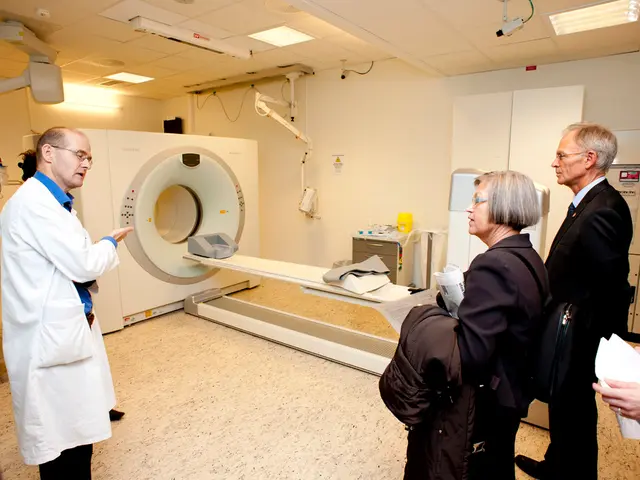Regenerative medicine and stem cells: Unfulfilled prospects or genuine possibilities?
Regenerative Medicine: A Promising Future Marred by Obstacles
The promise of regenerative medicine – a rapidly advancing field that employs cells, biomaterials, and molecules to heal or replace damaged tissues – remains tantalizingly out of reach for many patients. Despite years of breakthroughs and widespread optimism, only a handful of regenerative medicine treatments have found their way into mainstream medical practice.
According to a panel of experts, convened by Prof. Giulio Cossu, the Division of Cell and Matrix Biology & Regenerative Medicine at the University of Manchester, the lack of progress in this area is a concerning issue. The panel's criticisms were published last week in The Lancet.
The potential of regenerative medicine to revolutionize healthcare lies in its ability to address the root causes of disease, rather than merely treating symptoms with traditional drugs. It offers the tantalizing prospect of regenerating lost cells, organs, or even fixing faulty genes.
On paper, cell therapies could solve the debilitating issues of diabetes, for example, by regenerating the islets of Langerhans in the pancreas, allowing the body to produce insulin. Unfortunately, despite the fervor surrounding regenerative medicine, such treatments remain elusive.
There have been some early successes in regenerative medicine, most notably the commonplace use of blood transfusions and bone marrow transplants. Cell therapies have also been utilized in cases of severe burn injuries, where skin cells are isolated, expanded in a laboratory, and transplanted onto the affected area to speed up healing.
However, regenerative medicine treatments have yet to enter mainstream medical practice in most areas. Despite an army of scientists worldwide working on new therapies, only fifteen approved cellular and gene therapy products can be found on the Food and Drug Administration (FDA) website.
The road from successful research to widespread clinical use is long and fraught with obstacles. Health authorities, such as the FDA, must ensure that new treatments are safe and effective before granting approval. Additionally, regenerative medicine treatments tend to be expensive, due to the need for specialized production facilities and skilled personnel, making them financially inaccessible for many patients.
The potential benefits of regenerative medicine are enormous, but the cost may limit its implementation, even if there are long-term cost savings. "While the market grows over the next few decades, thinking of ways to make regenerative medicine products more affordable and cost-effective will be essential so that patients can benefit," the report's authors explain.
In recent years, the FDA has cracked down on stem cell clinics that offer unproven therapies, with one such clinic in Florida receiving a warning for marketing stem cell products without FDA approval. Such practices exploit the hopes of desperate patients, as they are often unable to afford traditional treatments or have exhausted all other options.
Addressing this issue will require strict regulation and oversight of the industry to protect patients from being taken advantage of. As Prof. Cossu says, "Exploration is essential for companies and academics to move the field forward, but it must be balanced with managing risks, costs, and potential benefits."
Despite the obstacles, the potential benefits of regenerative medicine are staggering. From the first blood transfusion to the development of induced pluripotent stem cells and genome editing, regenerative medicine holds great promise for the future. As researchers, doctors, patients, regulators, and society as a whole, it is our collective responsibility to navigate this new global terrain, balancing innovation, affordability, and patient safety.
- The potential of regenerative medicine to heal or replace damaged tissues in patient care lies in its ability to address the root causes of medical conditions, such as regenerating lost cells or fixing faulty genes.
- In order to ensure that new regenerative medicine treatments are safe and effective, health authorities like the FDA must oversee their development and grant approval only after thorough examination.
- Despite the high costs associated with regenerative medicine treatments due to specialized production facilities and skilled personnel, their long-term cost savings could make them more affordable and accessible to patients.
- Strict regulation and oversight of the regenerative medicine industry are necessary to protect patients from being exploited, particularly by stem cell clinics offering unproven therapies.








